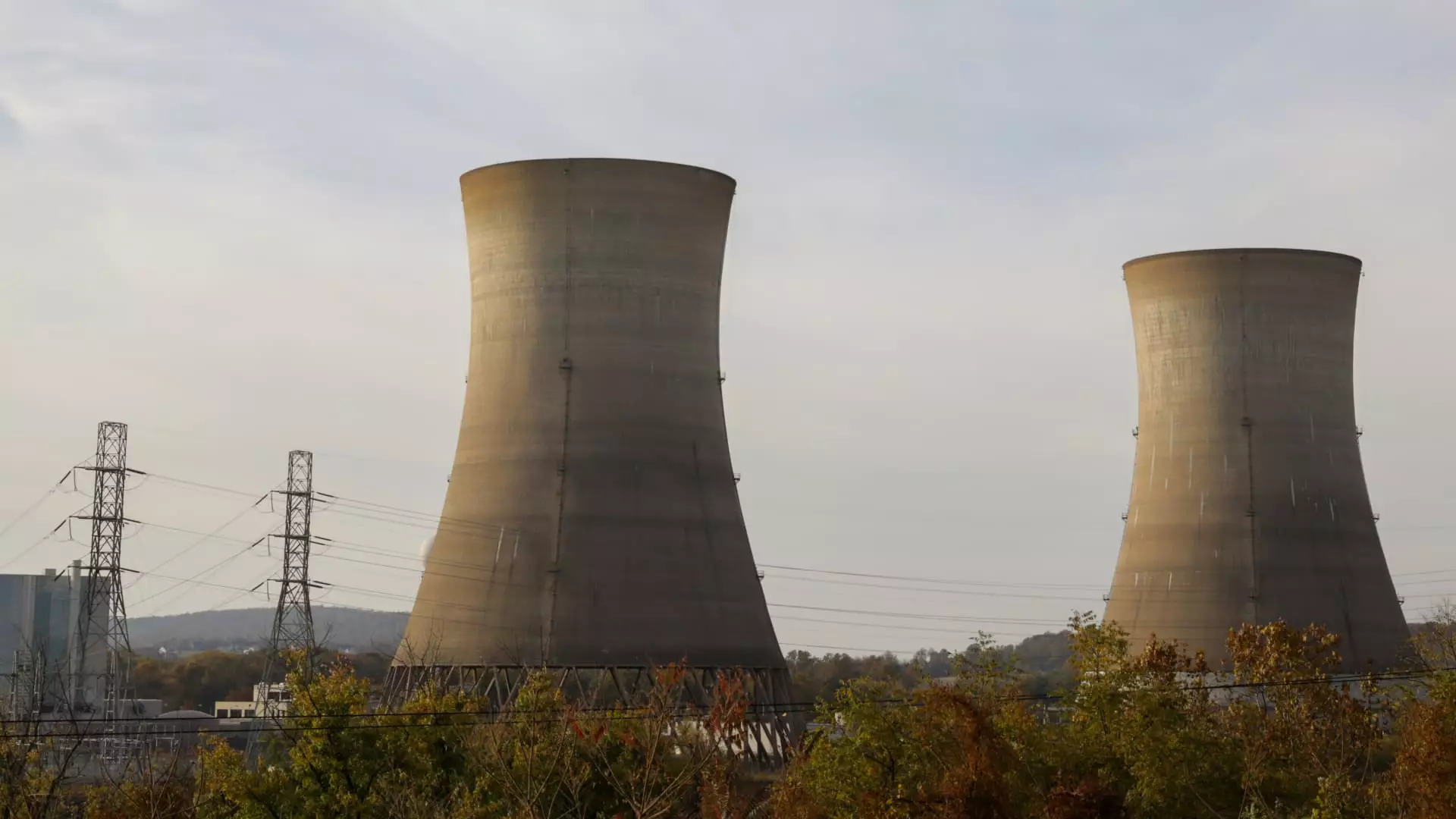The global energy landscape is undergoing a seismic shift, and at the center of it all lies uranium—a resource that is both increasingly recognized and harshly critiqued for its dual capacities in energy production and geopolitical strategy. John Ciampaglia, CEO of Sprott Asset Management, has been at the forefront of this discussion, heralding a “real shift” toward nuclear energy as the world grapples with escalating energy demands, particularly from data-hungry sectors like artificial intelligence. In a time when climate change is not merely a talking point but a pressing reality, the arguments surrounding uranium necessitate a closer examination.
Sprott’s Physical Uranium Trust has garnered substantial attention, showcasing a remarkable uptick of 22% in just two months. The figures indicate a reinvigorated interest in uranium—a fuel source that harnesses enormous energy potential while producing zero greenhouse emissions. The implications are profound, not merely for investors, but for societies seeking sustainable pathways forward.
Acknowledging the Critique
However, the portrayal of uranium as a savior of energy security does warrant scrutiny. The complexity surrounding nuclear energy is undeniable. The colossal investments and timeframes associated with establishing new nuclear power plants are a double-edged sword. VanEck CEO Jan van Eck rightly asserts that building new facilities can take many years—a reality that underscores the impatience prevalent in capitalist markets. With the rapid advancements in renewable energy technologies, the continued emphasis on uranium presents the question: Are we placing too many chips on a resource with an arduous implementation timeline?
While the need for stable, reliable energy is indisputable, one must question whether uranium can efficiently meet our immediate needs or if it merely serves as a long-term solution. The growing dominance of large tech companies, which require uninterrupted power for their operations, amplifies the urgency of addressing energy supply challenges now rather than waiting for years until new nuclear facilities come online.
The Political Landscape around Nuclear Energy
On the political front, the inclination toward nuclear energy appears to be swaying, albeit slowly. It’s intriguing to note that except for Germany—a nation standing firm in its anti-nuclear stance—the majority are pivoting back toward nuclear as a primary energy source. This trend is not without its frustrations and biases, particularly in how global energy policy is formulated. The Trump administration’s approach, advocating for nuclear expansion, is indicative of the potential for governmental influence in accelerating the development of this form of energy, especially regarding the rapid construction of new reactors.
The fact that regulators can create a conducive environment for rapid development means that we might stand on the brink of a nuclear renaissance, provided that the political will is firmly in place. Still, this thread of optimism must be woven together with critical discussions about safety and waste management, which often fall victim to the industry’s marketing narrative.
Uranium’s Energy Density: A Boon and a Challenge
Ciampaglia’s point about uranium being “incredibly energy-dense” compared to fossil fuels shines a light on one of the prevailing advantages of nuclear: its minimal carbon footprint relative to the energy output it provides. In an era when climate urgency necessitates immediate action, development of nuclear infrastructure could offer a stabilizing force in the energy mix.
Yet, while it’s easy to romanticize this energy source, one must also grapple with the realities of public perception. Misunderstanding or fear surrounding nuclear energy can be significant barriers to its expansion, as seen in various community pushbacks against potential nuclear projects. The question remains whether proponents can effectively communicate its benefits and address fears without resorting to technocratic jargon.
Uranium’s potential in reshaping our energy future is undeniable, yet it beckons rigorous debate and a balanced perspective. The energy transition is more than a quest for sustainability; it’s an intricate tapestry of technological innovation, political maneuvering, and societal will. As we weigh the evidence, one thing is clear: nuclear energy must be part of the dialogue, but it cannot be lauded without adequately acknowledging its limitations and challenges.

